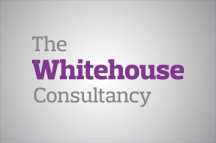 It was deepest recess, the balmy days of mid-August, when the Government released two documents that surprised almost everyone. The first was the Childhood Obesity Plan: not a strategy, a plan, and a lightweight one at that. After a year of being promised something substantial, those looking forward to the Government’s outline of how it was going to bring down the childhood obesity rates had thirteen pages to flick through. Charities, clinicians and academics were surprised alright, and not pleasantly so.
It was deepest recess, the balmy days of mid-August, when the Government released two documents that surprised almost everyone. The first was the Childhood Obesity Plan: not a strategy, a plan, and a lightweight one at that. After a year of being promised something substantial, those looking forward to the Government’s outline of how it was going to bring down the childhood obesity rates had thirteen pages to flick through. Charities, clinicians and academics were surprised alright, and not pleasantly so.
The second document was much bulkier. The Government’s consultation on the proposed Soft Drinks Industry Levy – known by pretty much everyone bar those within Government as the sugar tax – is a detailed, extensive document. It carefully sets out the options for how the tax should be levied, on what products and in what circumstances. What the consultation does not do is ask whether the tax should be levied.
This was another surprise. Many within the soft drinks industry had reacted with horror when the tax was announced by George Osborne in March 2016. When Mr Osborne was brutally sacked once Theresa May became Prime Minister, some allowed themselves to hope that the idea of the sugar tax would follow him out of Downing Street.
It remains. Perhaps in order to balance disappointment at the underwhelming Childhood Obesity Plan, perhaps to demonstrate that Mrs May’s new Government will take on big business where required, perhaps just because all governments like new tax revenue, it is clear that only something dramatic will stop the tax from going ahead now.
But Government has given itself plenty of time and space to get the details right. The tax won’t be part of legislation until the Finance Bill 2017 and won’t come into effect for a year after that.

This is sensible. As with most tax policy, the details are key. The consultation document makes clear that what is and is not covered is a complicated process – which, to be fair to the Government, they recognise. There are 46 questions posed in the consultation itself, on everything from one-off costs of registering with the tax authorities right through to the definition of a ‘small operator’ who would be excluded from the tax.
It is vital that companies operating in the drinks industry look closely at these questions – they are opportunities to make sure that your products aren’t captured, inadvertently or not, by the sugar tax. Civil servants may have done their research before drawing up the document, but they are by no means experts. Some definitions of what is a sugary soft drink may affect companies that simply do not regard themselves as soft drinks manufacturers because of the particular nature of the product or the fact that the product is addressed to a specific group of the population with protected characteristics – such as lactose intolerant people.
So manufacturers actually face some difficult questions. Does your product contain less than 75% milk, or is it a dilutable drink, or is a plant-based (e.g. soya) drink? If it is any of these things and contains added sugar, then it may – may – jump in price from April 2018.
Unless, of course, the case is well made to Government for the levy to not apply to a particular product. Companies have until 13th October 2016 to respond to the Government, who are also keen to meet with those who may be affected. This is probably the best, most important opportunity businesses in the sector have to engage with policy-makers and have their views heard. The Government may have set aside plenty of time to deliberate – but they will not consult forever. And few Governments ever forgo tax revenue in the future when they’ve already started collecting it.














